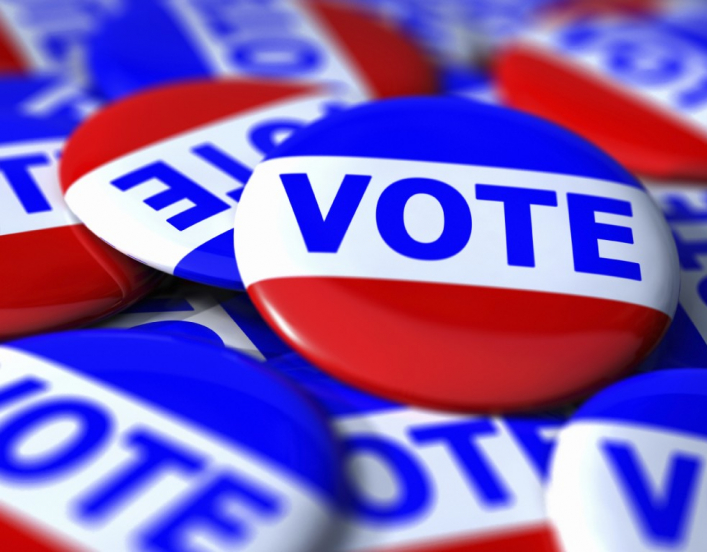Where We Stand: Equal Rights Amendment
To guarantee equality, individual rights, and social justice for a diverse and inclusive society, AAUW advocates the passage and ratification of the Equal Rights Amendment.
The majority of Americans mistakenly believe that women and men have equal rights under the Constitution. The 14th Amendment of the Constitution explicitly states that men are guaranteed equality under law but is poignantly silent about women. The advancement of women’s equality continues incrementally through patchwork legislation and court decisions, but women’s equality under law remains illusory as these laws can be changed or even revoked at the whim of legislators and judges. The Equal Rights Amendment (ERA) would provide, once and for all, the constitutional guarantee that all men and women are truly equal under the law and that these rights cannot easily be abridged.
AAUW in Action
All public policy actions take direction from the AAUW Public Policy Priorities, voted on by members every two years. AAUW is a nonpartisan organization—but nonpartisan does not mean “non-political”. Since its first meeting in 1881, AAUW has been a catalyst for change. Together, through our coordinated and strategic advocacy, we’ve enacted invaluable legislation at the federal, state, and local levels. The 2021-2023 Public Policy Priorities directly call for the passage and ratification of the ERA.
The public policy team engages in many efforts on this key issue, including but not limited to:
- Working in coalition with other gender equity and civil rights organizations, including the ERA Coalition.
- Mobilizing AAUW advocates and members through targeted calls to action on important legislation, like J. Res. 17/S.J. Res. 1 which would remove the deadline for ratification of the ERA.
- Joining timely amicus briefs to assist the courts in coming to informed decisions about the ERA.
- Engaging directly with elected leaders and the public through calls, letters to political offices, and comments and testimony in hearings.
- Providing voter education resources on key equity issues to consider during elections and offering information on how elected officials have voted in the past (more about this and Get Out the Vote guides at the AAUW Action Fund).
What It Says: The Equal Rights Amendment
Section 1:
Equality of rights under the law shall not be denied or abridged by the United States or by any state on account of sex.
Section 2:
The Congress shall have the power to enforce, by appropriate legislation, the provisions of this article.
Section 3:
This amendment shall take effect two years after the date of ratification.
Why We Need the ERA
The progress our country has made on gender equality through the courts and patchwork legislation can be reversed. Sex discrimination does not have the same legal protection as other constitutional classes, such as race, religion, or nationality. This constitutional double standard means that hard-won legislative and court victories against sex discrimination are not permanent—and can be rolled back or difficult to enforce.
The lack of constitutional equality reaches every aspect of women’s lives. The ERA would clarify, once and for all, that sex discrimination in employment and wages, reproductive rights, insurance, Social Security, education, and more is a violation of constitutional rights. Importantly, the ERA would also provide new opportunities to seek legal recourse when an individual faces sex discrimination and would place the burden of proof on those who discriminate instead of those fighting for equality.
The Equal Rights Amendment in Congress
The ERA was first introduced in Congress in 1923 and was reintroduced every year until its passage in 1972. The proposed constitutional amendment required ratification by three-fourths of all states. Congress gave state legislatures until 1979 to ratify the amendment, later extended to 1982. By the time the final ratification deadline passed in 1982, 35 states had ratified the ERA, just three states short of the requirement.
Decades later in 2017, Nevada became the 36th state to ratify the ERA, followed by Illinois as the 37th state a year later. In early 2020, Virginia became the 38th and final state needed to meet the three-fourths ratification requirement. However, the ERA continues to face challenges surrounding its adoption as the 28th amendment to the Constitution. A joint resolution (H.J. Res. 17/S.J. Res. 1) to remove the 1982 deadline for ratification of the ERA, and allow Nevada, Illinois, and Virginia to count towards ratification, was introduced in the 117th Congress. In March 2021, the House of Representatives voted with bipartisan support to pass the resolution, which now requires passage in the Senate. Urge your Senators to support the ratification of the ERA here.
Members of Congress have also introduced resolutions, including H.J. Res. 28 in the 117th Congress, calling for a constitutional amendment which would prohibit denying or abridging equality of rights on account of sex. Typically referred to as the “start-over amendment,” the legislation would be sent to each state for ratification after passing in the House and Senate.



